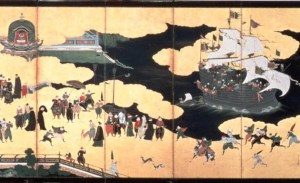Kumamoto Castle is a Japanese enclosure located in Kumamoto Prefecture. It was built in 1607 and it is one of the few castles that has remained intact since its construction.
It is a large and very well fortified building.
In its precincts there are more than 800 cherry trees, which bloom in April, forming a magical spectacle that attracts thousands of visitors who come each year to enjoy this gift of nature.
The castle was the home of the Hosokawa samurai clan, who ruled Kumamoto for approximately two hundred years. Near the castle, in the San-no-Maru Park is the Hosokawa Gyobu-tei, former residence of the Hosokawa clan.
A few years after the consolidation of the Meiji era (1868). The castle was besieged during the Satsuma Rebellion, a movement led by Saigo Takamori against the new system of government. During this insurrection the castle was looted and burned after 53 days of harassment.
Later, in 1960 and 2008, parts of the castle burned down during the civil war were rebuilt and opened to the public for display. For example, the donjon (central part of the castle) is a cement restoration dating from 1960, but many ancillary wooden buildings remain the originals.
The castle consists of two towers, the main one with six floors and a smaller one with four floors. It also has a fine Japanese garden. The curved rock walls known as musha-gaeshi as well as the protruding wooden roofs were designed to prevent enemies from entering the castle. They also used Stone Falls as deterrents.
Inside the building, visitors can see precise recreations of the opulent surroundings in which the daimyo would receive guests. Likewise, you can see interesting exhibits on the reconstruction of the building.
Kumamoto Castle is considered one of the three best castles in Japan along with Nagoya and Osaka. For this privilege and other reasons, it is important that you be considered to be included in your plans during your stay in Kumamoto Prefecture.

